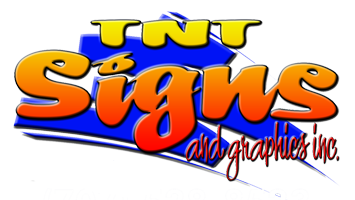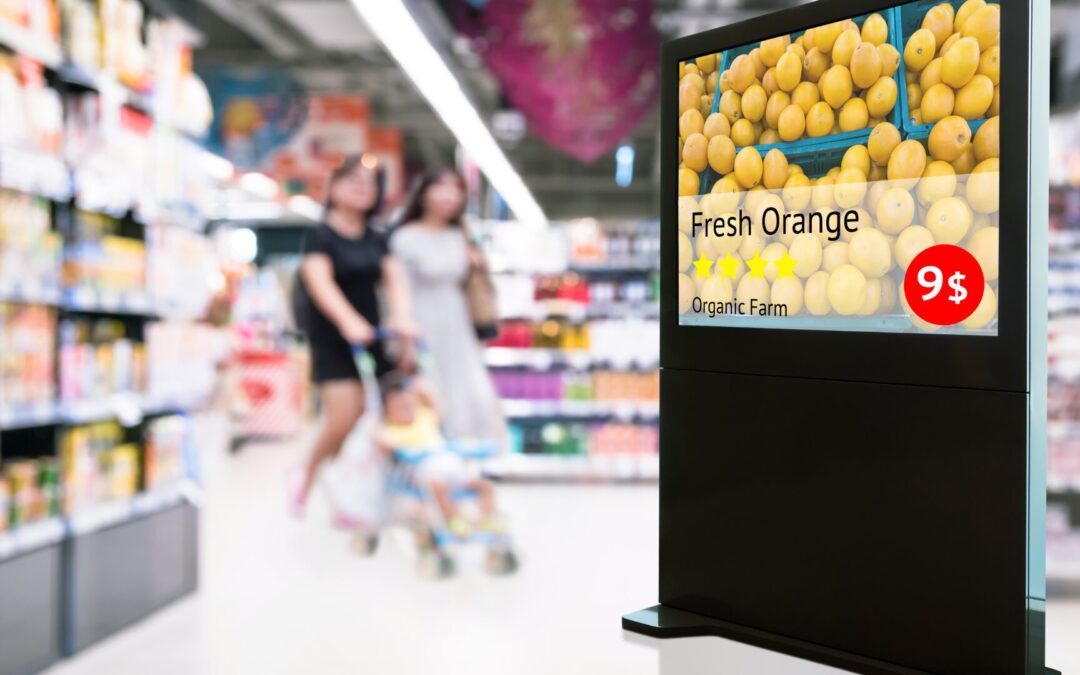Greetings from TNT Signs! The marketing landscape has seen significant transformations over the past decade, driven largely by advancements in technology. Among these, digital signage has emerged as a powerful tool that reshapes how businesses communicate with their audiences. This blog will delve into the rise of digital signage, its advantages, and how businesses can effectively integrate digital solutions with traditional signs to create a comprehensive marketing strategy.
The Rise of Digital Signage
Digital signage refers to the use of digital displays, such as LED screens, LCD monitors, and projection systems, to deliver content like advertisements, information, and entertainment. This technology has rapidly gained popularity across various industries due to its dynamic and versatile nature.
Technological Advancements: The proliferation of high-definition screens, affordable display technology, and sophisticated content management systems (CMS) has fueled the growth of digital signage. These advancements make it easier for businesses to deploy and manage digital content in real-time.
Wider Adoption: From retail stores and restaurants to corporate offices and public spaces, digital signage is now ubiquitous. Its ability to engage audiences, provide real-time updates, and enhance the customer experience has led to widespread adoption.
Flexibility and Adaptability: Digital signage is highly adaptable, allowing businesses to tailor content to specific audiences, times of day, or even individual customer interactions. This flexibility makes it a valuable asset in modern marketing strategies.
Advantages of Digital Signage
1. Enhanced Engagement
Digital signage captures attention with its vibrant displays and dynamic content. Moving images and videos are naturally more engaging than static signs, making it easier to attract and retain customer interest.
Example: A retail store uses digital signage to display rotating promotions, new arrivals, and video demonstrations. This keeps customers engaged and encourages them to explore more products.
2. Real-Time Updates
One of the most significant advantages of digital signage is the ability to update content in real-time. This allows businesses to respond quickly to market trends, promotional opportunities, and customer feedback.
Example: A restaurant can instantly update its digital menu boards to reflect new dishes, daily specials, or sold-out items, ensuring accurate and timely information for customers.
3. Cost-Effectiveness
While the initial investment in digital signage may be higher than traditional signage, the long-term savings can be substantial. Digital signs eliminate the need for frequent printing and replacement of physical signs, reducing overall costs.
Example: A business can run multiple campaigns on the same digital display, saving on printing costs and reducing waste compared to traditional posters and banners.
4. Interactivity
Digital signage can be interactive, allowing customers to engage directly with the display. Touchscreens, QR codes, and motion sensors can provide an immersive experience, offering additional information or personalized content based on customer interactions.
Example: A retail store installs interactive digital kiosks where customers can search for products, check prices, and read reviews, enhancing the shopping experience.
5. Data Collection and Analytics
Digital signage systems can collect data on customer interactions, such as which ads are most viewed or which products are frequently searched. This data can provide valuable insights into customer behavior and preferences, helping businesses refine their marketing strategies.
Example: A digital display in a clothing store tracks which promotional videos attract the most attention, allowing the store to optimize future content based on customer engagement metrics.
Integrating Digital Signage with Traditional Signs
While digital signage offers numerous benefits, traditional signs still hold significant value in a comprehensive marketing strategy. Integrating both digital and traditional signage can create a cohesive and effective marketing approach.
1. Consistent Branding
Maintaining consistent branding across all signage is crucial for reinforcing brand identity. Use similar colors, fonts, and themes in both digital and traditional signs to create a unified look.
Example: A coffee shop uses its signature color scheme and logo on both its digital menu boards and printed promotional posters, ensuring a cohesive brand presence.
2. Strategic Placement
Combine digital and traditional signs strategically to maximize their impact. Use traditional signs for static, long-term messages and digital signs for dynamic, changeable content.
Example: A hotel places traditional signs at the entrance and in hallways to provide clear, permanent directions, while digital signs in the lobby display real-time event schedules and promotional offers.
3. Complementary Content
Leverage the strengths of each type of signage by using complementary content. Traditional signs can provide foundational information, while digital signs offer additional details and real-time updates.
Example: A gym uses traditional signs to display permanent facility rules and membership information, while digital screens showcase class schedules, trainer profiles, and live workout tips.
4. Interactive Wayfinding
Integrate digital wayfinding solutions with traditional directional signs to enhance navigation and customer experience. Digital wayfinding can provide interactive maps, route options, and real-time updates.
Example: A large shopping mall uses traditional signs for major directory locations and digital kiosks for interactive, detailed directions and promotional highlights of nearby stores.
5. Enhanced Customer Experience
Use digital signage to enhance the customer experience by providing engaging, informative, and entertaining content that complements traditional signage.
b: A museum combines traditional exhibit labels with digital displays that offer in-depth videos, interactive timelines, and augmented reality experiences, creating a richer visitor experience.
Real-Life Examples from TNT Signs
At TNT Signs, we have successfully integrated digital and traditional signage for various clients, delivering impactful marketing solutions that drive engagement and sales. Here are a few examples:
– Retail Store: We designed a comprehensive signage strategy for a retail chain, combining traditional window decals and hanging signs with digital displays showcasing seasonal promotions, new arrivals, and customer testimonials. This integration enhanced the store’s visual appeal and improved customer engagement.
– Corporate Office: For a corporate client, we implemented digital directories and interactive wayfinding systems in conjunction with traditional lobby signs and office plaques. This blend of signage improved visitor navigation and reinforced the company’s professional image.
– Restaurant: We created a dynamic menu board system for a restaurant, featuring digital screens that display real-time menu updates, nutritional information, and promotional videos. Traditional table tents and wall posters complemented the digital displays, providing a cohesive dining experience.
Why Choose TNT Signs for Your Signage Needs
At TNT Signs, we are committed to helping businesses harness the power of both digital and traditional signage. Here’s why you should choose us for your signage solutions:
1. Expertise and Experience
With years of experience in the signage industry, our team has the knowledge and skills to create effective and visually appealing signage solutions tailored to your needs.
2. Advanced Technology
We use cutting-edge technology to design and implement digital signage systems that are reliable, versatile, and engaging. Our traditional signage solutions are crafted with the highest quality materials and craftsmanship.
3. Customization Options
We offer extensive customization options to ensure that your signage aligns with your brand identity and marketing goals. From design to installation, we work closely with you to deliver the perfect signage solution.
4. Comprehensive Solutions
Our comprehensive approach integrates digital and traditional signage to create a cohesive and effective marketing strategy. We ensure that all your signage needs are met, from concept to completion.
Digital signage is revolutionizing modern marketing, offering dynamic, engaging, and cost-effective solutions that enhance customer interaction and drive sales. By integrating digital solutions with traditional signs, businesses can create a comprehensive marketing strategy that maximizes impact and consistency.
At TNT Signs, we are dedicated to providing innovative signage solutions that meet the evolving needs of our clients. Contact us today to discuss how we can help you leverage the power of digital and traditional signage to elevate your marketing efforts and achieve your business goals.

